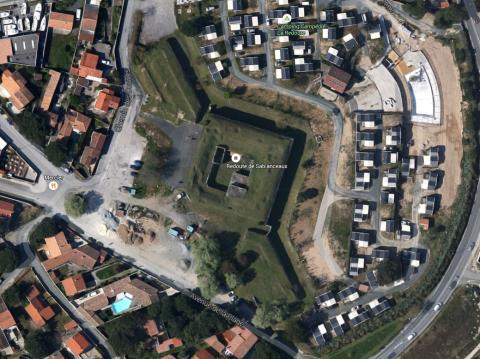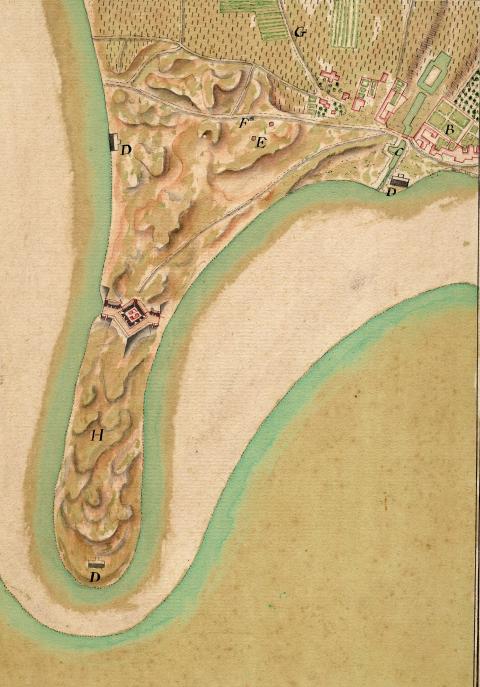Redoubt of Sablanceaux
History and description
The first fortification along the beach of Sablanceaux, on the south-east flank of the Isle of Rhé, dates back to 1673, during the war of Holland. It consisted at the time of a redoubt with a square isthmus dam located at an angle. Later, Vauban recognised the strategic value of this place, guarding the strait separating the Isle of Rhé from the continent. He deemed that the redoubt was insufficient since it was vulnerable to a surprise attack. This was why he suggested replacing it with a square fort with four bastions and supported by four batteries in the 1680s. This project was rejected and the scope was limited to the construction of a covered way and two curtain walls equipped with cannon emplacements and preceded with an aquatic moat to connect the redoubt to the two shores. In 1701, at the start of the Spanish war of Succession, a terraced battery was added in the arc of a circle in front of the redoubt. This battery was paved and a powder keg was added in 1756, at the start of the Seven Years war.From 1846, the site was upgraded to keep pace with progress in artillery. The July Monarchy reconstructed the stonework of the square and developed it with more substantial ramparts. The battery was given a defensive guardroom and a new powder keg, which the Second Empire covered in earth ten years later.
During the Second World War, the German occupation saw the redoubt transformed by concreting the former structures and adding blockhouses around them. It became a guardhouse of the Atlantic Wall.
Current state
The redoubt still exists and is open to visitors, although dilapidated and subject to some vandalism over time.
Redoute de Sablanceaux
Redoute de Sablanceaux
46° 9' 29.3915" N, -1° 15' 57.0229" E

